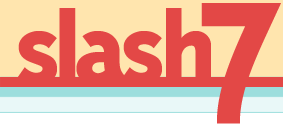The Way The Web Wasn’t
Check out Qooxdo (as in “cooks do”), an open-source set of Ajax “widgets.” None of em show up in Safari 2, so I can’t try them—but they have a page of screenshots.The site is very attractive, and the name creative, so I was hoping for a really whizbang product. Aaand… they all look like Windows.
Here’s the problem: Assuming, even, that you will grant that Windows is an effectively designed interface, it’s an effectively designed interface for an operating system. The web is something different.
An old-time hallmark of bad web design is designing for the web like you design for print. It doesn’t work, end of story. Designing for the web as if it’s a piece of “real software” doesn’t work either. It’s not just a difference in aesthetic, but functionality.
Analogies in user interfaces don’t work. Neither do metaphors. Just ask Microsoft about their good friend Bob. Computers, and now the internet, are a new thing, a different thing, and must be treated as such.








I checked these little widgets out, hoping they would be something really cool and nifty. And I found that it reminded me far to much of my Java Swing days. And you’re right. They look like Windows.
A widget-type framework will never work for the web. After looking at that, I’m starting to really appreciate the simplicity of HTML. Who needs a whole framework when you have these easy little tags that will let you do everything you ever really needed to?
The thing I like about the web is that it really two-dimensionalized interface design. Instead of trying to go 3D, we get these interactive documents that can be more colorful, creative, and inventive than normal OS widgets.
I agree with you one hundred percent. The web is ment for websites and web applications. Web applications generally include dull, database driven sites that don’t need a full blow application.
Oh yeah! You may want to correct your site to reflect XHTML standards. Or remove the valid XHTML 1.0 link on the side. 🙂
Like it or not, there’s a significant Rails project going on to implement the entire NextStep API in Flash, with a Rails backend.
The end result is that you could do all your programming in Ruby, and a complete Flash application (with windows, menus, etc.) would be sent to the client’s browser.
"ActionStep":http://actionstep.org/
As with many things, it’s the implementation that matters.
I think it would be usefull for other users also…
Good idea!
I think it would be usefull for other users also 🙂
I think it would be usefull for other users also…
Just thought I’d make a note about a problem!
That’s awesome!
Just thought I’d make a note about a problem 🙂
The content of your show is great, I really enjoy it…
Thats correct 🙁
I had and the fix I found 🙂
But I’m not sure why 🙂
Thats correct…
There is some strange behaviour with this.
Not really new 🙁
Thanks. Updated appropriately 🙂
Very clear 🙂
But I’m not sure why.
But I’m not sure why.